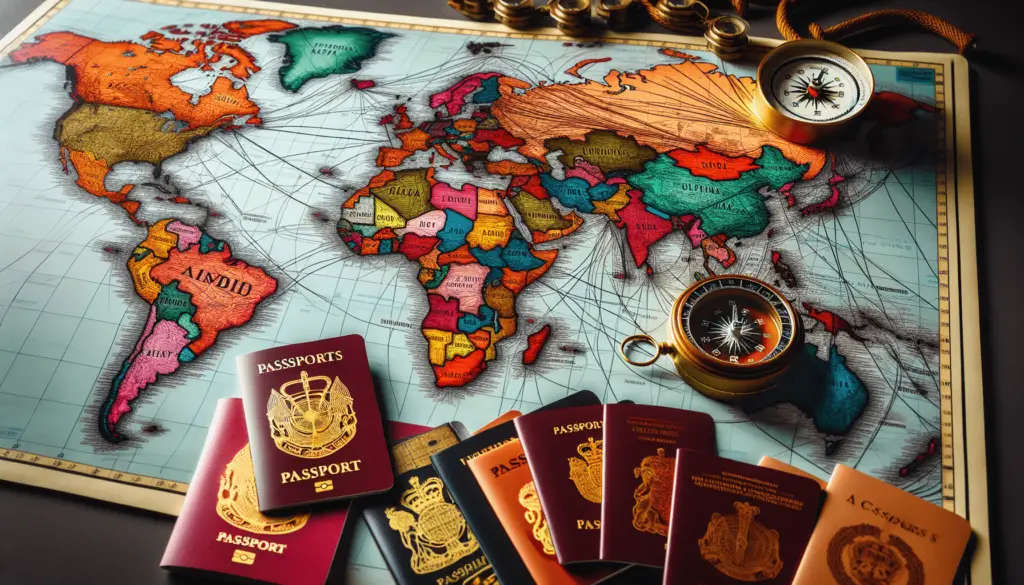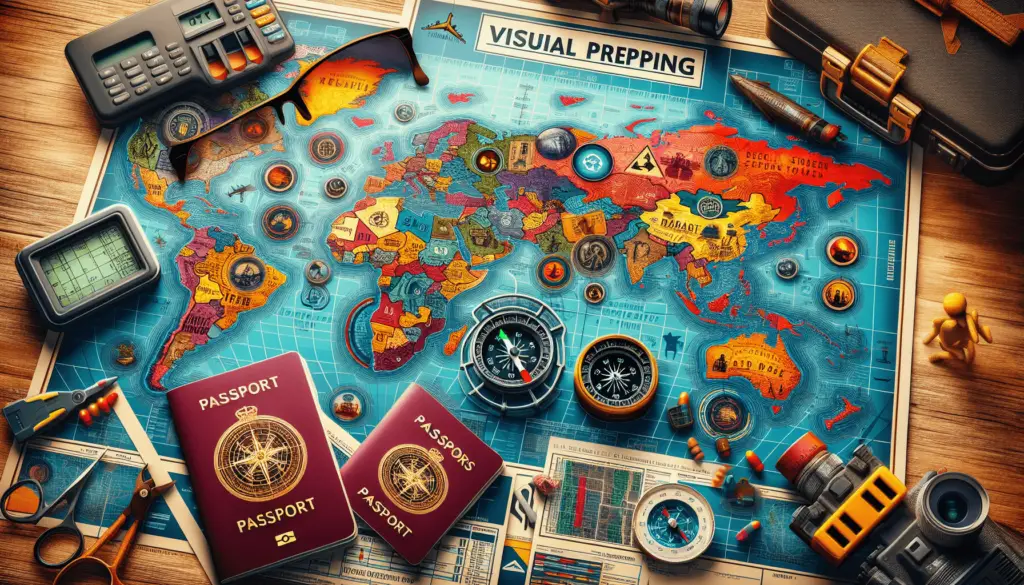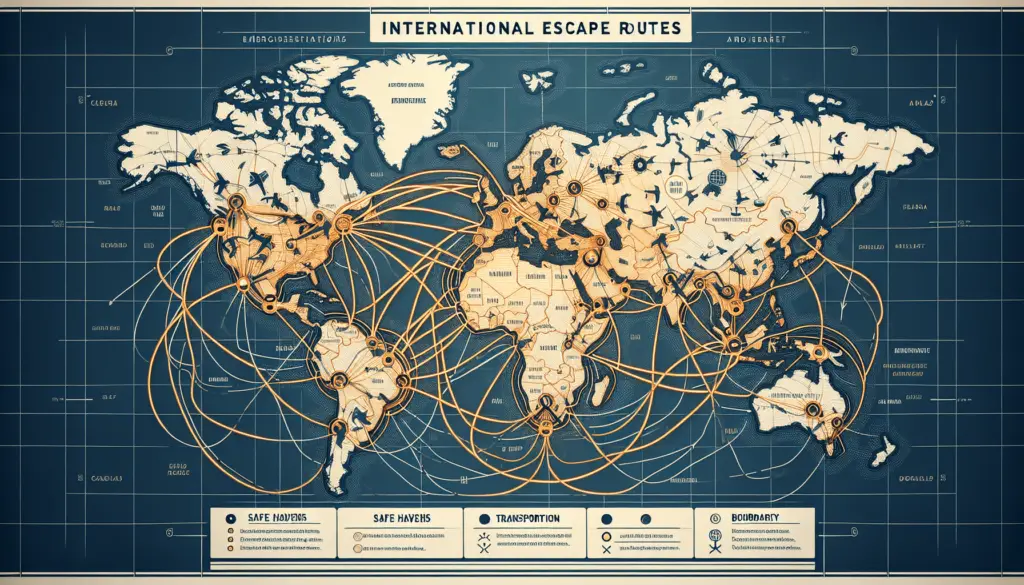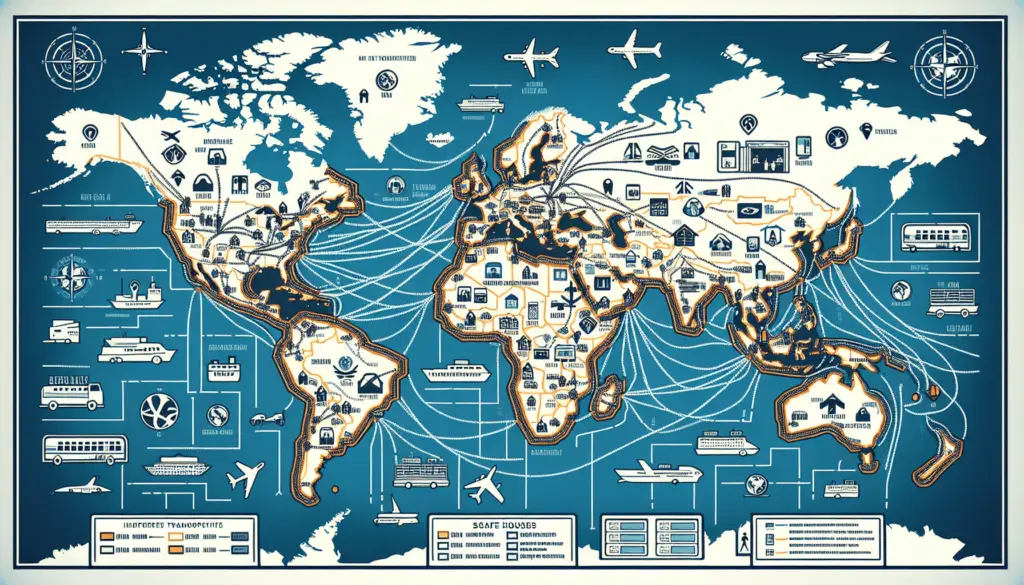Are You Prepared for an Emergency Escape?
It’s important to have a plan in case of an emergency. Thinking about escape routes may seem extreme, but being prepared can save your life in critical situations. This guide is designed to help you navigate international escape routes as a prepper.

Understanding International Escape Routes
Escaping to an international location during a crisis requires careful planning and consideration. You must be aware of the best routes, legal requirements, and potential obstacles. International escape routes can involve various modes of transportation like airplanes, boats, or even hiking.
Researching Potential Destinations
Before deciding on an international escape route, it’s essential to research potential destinations. Look for countries with stable political climates, friendly immigration laws, and low crime rates. Factor in language, culture, and healthcare availability when considering a destination for your escape plan.
Tips for Choosing the Right Destination
When selecting a destination for your escape route, consider factors like proximity to your current location, ease of travel, and personal preferences. It’s important to choose a country where you can blend in easily and live comfortably under the radar.
Legal Requirements and Documentation
Understanding the legal requirements and necessary documentation for international escape routes is crucial. Make sure your passports, visas, and other travel documents are up-to-date. Familiarize yourself with any specific visa requirements for your chosen destination.

Obtaining Multiple Citizenship
Having multiple citizenships can provide you with more options during an emergency escape. Research countries that offer citizenship by descent, marriage, or investment. Dual citizenship can give you access to more escape routes and increase your chances of safe passage in a crisis.
Modes of Transportation
Depending on the distance and location of your chosen destination, you may need to consider different modes of transportation for your international escape route. Evaluate options like commercial flights, private jets, boats, or land routes. Each mode of transportation has its advantages and considerations.

Air Travel Considerations
Air travel is often the fastest way to reach an international destination during an emergency. However, flights may be subject to cancellations, delays, or restrictions. Ensure you have alternative flight options and consider private jet charters for added flexibility and privacy.
Sea Travel Options
If your escape route involves crossing oceans or seas, sea travel may be a viable option. Consider booking passage on cargo ships, passenger ferries, or private yachts. Be prepared for longer travel times and potential challenges like rough seas or inclement weather.

Land Travel Routes
When planning an international escape route over land, assess the feasibility of driving, biking, or walking to your destination. Consider factors like road conditions, border crossings, and legal requirements. Having a well-equipped vehicle and emergency supplies is essential for overland travel.
Survival Skills and Training
In the event of an emergency escape, having survival skills and training can be life-saving. Learn basic first aid, navigation, and self-defense techniques. Consider taking survival courses or joining a prepper community to enhance your skills and knowledge for international escapes.
Securing Financial Resources
Ensure you have access to financial resources during an emergency escape. Have cash, credit cards, and valuable assets readily available for use. Consider storing essential documents, currencies, and precious metals in a secure location for quick retrieval during crises.
Building a Network of Contacts
Having a network of contacts can be invaluable during an international escape. Connect with trusted individuals, organizations, or prepper groups for support and assistance. Share information, resources, and strategies for safe passage in emergency situations.
Communication Tools and Technology
Stay connected with reliable communication tools and technology during an emergency escape. Carry a fully charged cell phone, satellite phone, or two-way radio for communication. Consider using encrypted messaging apps and GPS tracking devices for added security.
Emergency Supplies and Essentials
Pack essential supplies and gear for your international escape route. Include items like food, water, shelter, clothing, and medications in your emergency kit. Prepare a bug-out bag or go-bag with survival essentials for quick evacuation in crisis scenarios.
Establishing Safe Houses and Hideouts
Identify safe houses and hideouts along your international escape routes. Scout locations with secure shelter, access to resources, and minimal exposure. Establish communication protocols and safe meeting points with your trusted contacts for emergency rendezvous.
Avoiding Detection and Surveillance
Maintain a low profile and avoid detection during your international escape. Dress inconspicuously, limit public interactions, and avoid sharing sensitive information. Be mindful of surveillance cameras, checkpoints, and potential threats along your escape routes.
Training for Emergency Scenarios
Prepare for various emergency scenarios and practice drills for your international escape routes. Simulate evacuation procedures, communication protocols, and response strategies with your network. Stay agile, adaptable, and alert to navigate unforeseen challenges during escapes.
Conclusion
Planning for an international escape as a prepper requires meticulous preparation, resourcefulness, and resilience. By understanding escape routes, legal requirements, and survival skills, you can increase your chances of safe passage during emergencies. Stay informed, connected, and prepared for unforeseen circumstances as you navigate international escape routes.
